#Nepalese Khukuris
Explore tagged Tumblr posts
Text
youtube
Afghanistan Campaign Gurkha Khukuri In-Depth Demo | Kult of Athena
Order this blade HERE.
The 6” Blade Gurkha Afghanistan Campaign Khukuri has a 5160 high carbon steel blade; the blade was tempered to have a very hard, dull-resistant edge of 58-60 HRC, a mid-section of 45-46 HRC and a softer, shock resistant spine of 22-25 HRC. The guard is of steel and the thick tang is surmounted by two rosewood halves robustly riveted to the tang for a grip. The tang is allowed to flare past the grip to allow for a hole-punched lanyard plate.
This Kukri comes with the traditional pair of utility knives; the Karda cutting knife and the Chakmak Khukuri sharpening tool.
The Khukuri and its accessory knives fit within a sheath crafted from pinewood assembled with traditional Laha glue and finished with a protective outer layer of water buffalo leather. It has an integrated belt loop of hardened water buffalo leather.
This Khukuri is one of the current issue blades used by Gurkhas whilst serving in Afghanistan. They can opt for this smaller Kukri or the larger version of this fighting knife.
Subscribe to our YouTube Channel
SEE IT ALL @ KULT OF ATHENA
SOCIALS:
INSTAGRAM
FACEBOOK
Join our email list to stay up to date on news and events!
#Kult of Athena#KultOfAthena#Ex Gurkha Khukuri House#EGKH#Afghanistan Campaign Gurkha Khukuri#knife#knives#dagger#daggers#weapon#weapons#blade#blades#Kukri#Kukris#Khukuri#Khukuris#Nepal#Nepal Weapons#Nepalese Weapons#video#videos#Review Video#Video Review#Youtube
3 notes
·
View notes
Text

The 22″ Blade Ancient Greek Double Edge Xiphos Sword is a reproduction of an ancient design.
1 note
·
View note
Note
/k/ says Himalayan Imports or Khukuri house. Actually, two anons rec’d Khukuri house. Kailish Blades was also rec’d.
Well yeah but those anons know less about this than me. Khukuri house is one of the manufacturers of "poorly balanced tourist kukris" that I was talking about. I mean as far as I can tell they're not bad, but I gather that they are suboptimal. Himalayan Imports is in fact actually bad. Kailish Blades I gather is quite good, although I only heard about them recently. If I can't find anything else I may eventually get a Kailish Blades kukri. That said, they are explicitly making reproductions—very good reproductions, but reproductions—and that's somewhat less desirable to me. My preference, all else being equal, would be for one that was actually military issue, and the thing is I know they're still in service! But idk who is making them for militaries. If it actually is kukri house, which I've heard rumblings of, I will feel vaguely disappointed at the world and just get a reproduction. But idk.
I mean this should be public knowledge, right? Like the gear that's issued to different units is, baring exceptions, publically known? Is there a place where that information is collected online? I feel like I should just be able to see who the Indian/Nepalese/British militaries are buying from. I could be a tax paying citizen just trying to do my due diligence for all they know!
11 notes
·
View notes
Text
The Origin of Khukuri (Kukri)
The Khukuri, a uniquely recurved blade, embodies Nepal’s storied cultural heritage, tracing back to centuries of craftsmanship and battlefield legacy. Distinct in form and purpose, it’s most widely associated with the bravery of the Gurkhas, the elite Nepalese soldiers known for their strength and valor.

The Khukuri’s origins are speculated to connect with ancient blades like the Greek Kopis and Indian sickle or sacrificial weapons, yet it evolved independently, adapting to Nepal's distinct needs and terrain.
Characterized by its angled blade, the Khukuri is engineered for powerful chopping and versatility. Its design enables it to function as both a tool and weapon, adapting to diverse uses, from clearing brush to ceremonial sacrifices. The blade typically features a small notch near the handle, symbolically representing protection and preventing blood from reaching the grip.
Throughout history, the Khukuri’s reputation grew as it became instrumental in the military campaigns of the Gurkhas. During the Anglo-Nepalese War (1814-1816), British forces were astonished by the skill and courage of Gurkha soldiers wielding Khukuris in battle. Read more about origin of Khukuri (Kukri) here.
To learn more about the origins and significance of the Khukuri, explore Himalayan Blades.
0 notes
Video
youtube
The Legendary Gurkhas: 200 Years of Bravery and Loyalty
The Gurkhas are a group of people from Nepal, known for their bravery, loyalty, and military prowess. They have a long history of serving in the British Army, dating back to the early 19th century. The relationship between the Gurkhas and the British Army began in 1815, at the end of the Anglo-Nepalese War. The British were impressed by the fighting skills and loyalty of the Gurkha soldiers and decided to recruit them into their own army. The Gurkhas quickly gained a reputation for their fierce fighting abilities and unwavering loyalty to their commanders. They were known for their skill with the khukuri, a traditional Nepalese knife, as well as their fearlessness in battle. The British Army soon realized the value of having Gurkha soldiers in their ranks and began recruiting them in large numbers. Over the years, the Gurkhas have served in many conflicts around the world, including both World Wars, the Falklands War, and the wars in Iraq and Afghanistan. They have earned a reputation as some of the toughest and most reliable soldiers in the British Army and have been awarded numerous medals for their bravery and service. The Gurkhas are known for their strong sense of honor and loyalty, both to their commanders and to each other. They have a unique bond with their fellow soldiers, forged through the shared experience of serving in some of the most dangerous and challenging environments in the world. This sense of camaraderie and brotherhood is one of the reasons why the Gurkhas are so highly respected within the British Army.
0 notes
Text
Sightseeing Tour In Nepal
The Sightseeing Tour in Nepal leads you to the UNESCO World Heritage Sites. Where you can discover ancient architecture, paintings and galleries, sculptures, and art from the second century. Similarly, visit Nepal's secret religious sites. Kathmandu Valley has beautiful scenery and is surrounded by beautiful green hills and snow-capped mountains. The valley covers an area of 218 square kilometers and is 1310 meters above sea level. It is a famous, unforgettable, religious and social trinity. Kathmandu, Lalitpur, and Bhaktapur each city have a Durbar Square (formerly a palace) with its ancient temples and royal residences, which include religious and social life. Here is the list where you can go for sightseeing if you are in Nepal.
Kathmandu Durbar Square Sightseeing Tour:
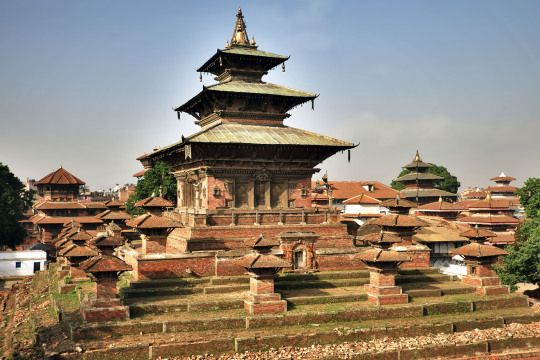
Kathmandu Durbar Square is protected by a UNESCO World Heritage Site. Kathmandu Durbar Square (former royal palace) was built in the 12th century. Durbar Square offers you many temples, Kumari Bahal (House of Living God), Kasthamandap (place of Wood), and a museum. Walking through Kathmandu's Durbar Square, you will visit the Hanuman Dhoka, the ancient and memorable royal residence of Kathmandu, named after the monkey god Hanuman. Nepalese kings are assigned duties and their delegated ceremonies are also held in the patio. The palace has a wooden gallery and carved mirrors.
Pashupatinath Sightseeing Tour :
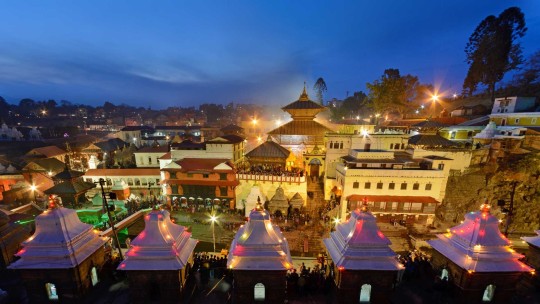
Pashupatinath Temple is also protected by a UNESCO World Heritage Site. Pashupatinath is the biggest Hindu pilgrimage in Nepal. There are linga statues of Shiva as well as statues, shrines, and temples dedicated to other deities in the complex. A temple dedicated to Shiva. However, King Bhupatindra Malla built the present temple in 1697 AD. A golden roof, silver doors, and exquisite wooden carvings adorn the pagoda structure. There are rows of Shiva shrines and Hindu pilgrims from all over South Asia sacrifice (Puja) to worship Shiva the lord of destruction. The Bagmati River flows close to the Arya Ghat lighthouse. It is undoubtedly a popular pilgrimage that attracts a large number of Hindu pilgrims every year.
Bouddhanath Sightseeing Tour :

Bouddhanath Stupa is protected by UNESCO World Heritage Site. Bouddhanath is one of the largest stupas in South Asia and is the center of Tibetan Buddhism in Nepal. The stupa is on the ancient trade route to Tibet and Tibetan traders have rested and prayed for centuries. Many people believe that Bouddhanath Stupa was built in the 5th century. Bouddhanath is a visual feast of beautiful Thangkas, Tibetan jewelry, and hand-woven carpets; Masks and Khukuri (knives) are sold in the surrounding shops.
Swayambhunath Temple Sightseeing Tour :
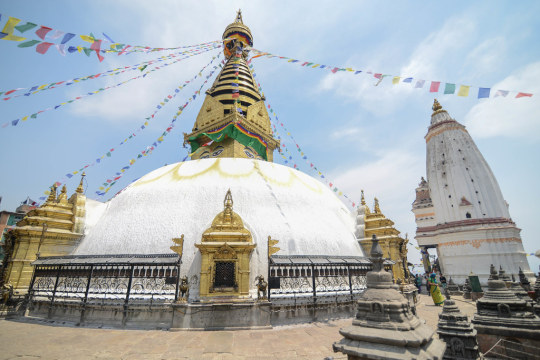
Swayambhunath is a UNESCO World Heritage Site. The history of the valley, according to legend, begins with Swayambhunath, or in an unexplained historical period, Bodhisattva Manjusiri found a beautiful lake during his travels. He saw a lotus that gave off a wonderful light in the middle of the lake, so he dug a well on a hill in the south and poured the water to wash the lotus. Swayambhunath is the mainland of the valley and is like a beacon below Nagarjun Hill. It offers a beautiful view of Kathmandu Valley. Kathmandu city also offers you other famous and interesting temples of gods and goddesses that will take you on a spiritual journey.
Changunarayan Sightseeing Tour :

Changunarayan Temple is also protected as a UNESCO World Heritage Site. It is the oldest temple near Kathmandu Valley. The temple built in the third century is decorated with stone, wood, and metal craft in the valley. A 5th-century stone inscription is found inside the temple complex and tells the story of the victorious King Mandev. This is one of the famous tourist spots near Kathmandu Valley.
Nagarkot Sunrise Tour :
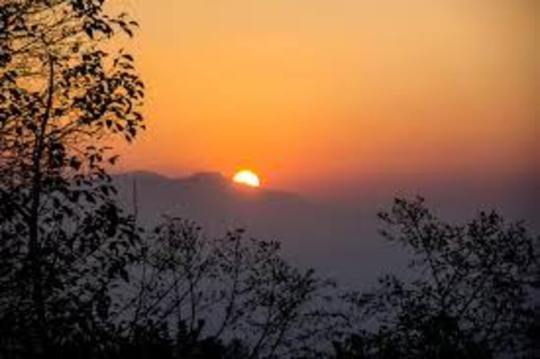
Nagarkot is located at an altitude of 2175 m, 32 km east of Kathmandu. Nagarkot is a famous hill station. It is a weekend destination for mountain lovers in peace and comfort. The sunrise seen from this mountain gives you a refreshing beautiful panoramic view of the Himalayas from Dhaulagiri in the west to Mt. Everest in the east.
Bhaktapur Sightseeing Tour :
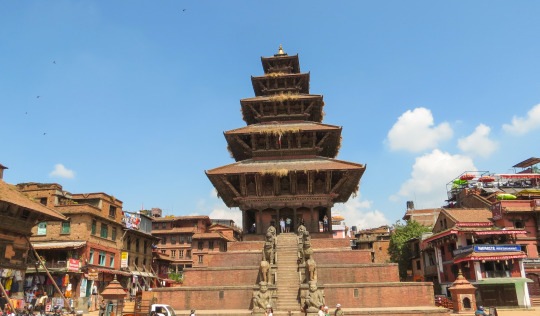
The city of Bhaktapur is protected as a UNESCO World Heritage Site. Bhaktapur, also known as Bhadgaon, means the city of worshipers. Bhaktapur is one of the most beautiful structures in the valley as it shows the ancient times. The main point of interest in Bhaktapur are Lion Gate: This gate is guarded on both sides by two huge statues of lions. On the long side, there are two stone images of the god. Golden Gate: Golden Gate is considered to be the most beautiful type of jewelry in the world.
Patan Sightseeing Tour :
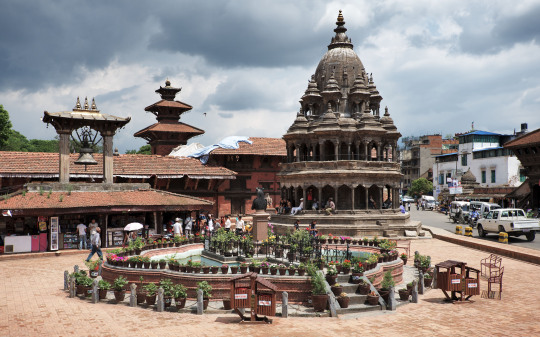
The UNESCO World Heritage Site preserves Patan. Patan is the second largest city in the valley. Patan has a long Buddhist history and four parts of the city are dotted with spots. Patan's central Durbar Square is full of temples. It is an architectural event that has more temples per square meter than in Kathmandu or Bhaktapur. Many other temples of different styles and many Buddhist monasteries are scattered around this fascinating city. Patan Durbar is a sprawling temple complex, undoubtedly the most impressive display of Newari architecture to be found in Nepal. There are also many other temples like Krishna, Bhimsen, Taleju Bell, Bhai Dega, and many others. Many temples give you more experience about Nepalese people's faith and respect for religion. All the temples are decorated with art and architecture. Patan also offers you the culture and lifestyle of the Newari people.
In Conclusion :
Nepal is one of the most popular destinations for historical, cultural, and Himalayan tours. Nepal tour packages in the above-mentioned areas as well as customized tour services with time and it is a proper holiday in Nepal. Come and join Alpha Adventure Treks for a wonderful sightseeing tour of these beautiful and diverse places.
0 notes
Link
Check out this listing I just added to my Poshmark closet: Antique Late 19th C. Nepalese Gurkha Kukri Knife with Chamak & Karda Intact.
0 notes
Photo
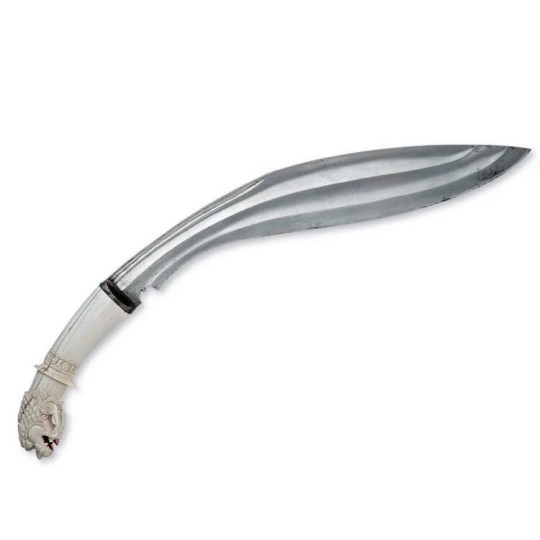
Nepalese Kukri gifted to Maharaja Jang Bahadur Prime Minister of Nepal 19th century. Estimated at 45 cm overall length. A kukri presented to Maharaja Jang Bahadur, Prime minister of Nepal. It has an unusual ivory hilt carved with a monster resembling a lion with a red stained mouth and tongue. Source: royalarmouries.org https://sword-site.com/thread/246/nepalese-kukri-gifted-maharaja-bahadur #knife #knifeporn #knifelife #knives #knivesofinstagram🔪 #khukuri #🔪 #nepal #travel https://www.instagram.com/p/CnX-Luey5hG/?igshid=NGJjMDIxMWI=
1 note
·
View note
Link
#kukri#khukuri#kukri blade#khukuri blade#gurkha khukuri#khukuri house#gurkha house#all people using khukuri#nepali using kukri#best kukri in nepal#best knife#nepalese using khukuri#kukrionline#kukri cold steel#traditional kukri
1 note
·
View note
Text





EGKH – Tactical Scimitar
This Tactical Scimitar from the Ex Gurkha Khukuri House of Nepal has a burly and hard-hitting blade of 5160 high carbon steel. The blade was differentially-tempered to possess a dull-resistant 58-60 HRc, a body of 45-46 HRc and a shock absorbing spine of 22-25 HRc. The sweeping blade delivers powerful slashes and deep cuts to a target and the polished wooden grip gives the bearer plenty of leverage with which to wield the sword. The tang runs for about 3/4 of the length of the handle.
The high quality scabbard is crafted from wood which is bound in leather and completed with a faux leather belt loop so that the sword can be worn vertically; it can also be worn across the shoulder with its adjustable shoulder baldric. Integrated with the scabbard is a pair of buttoned retaining straps to secure the hilt.
#Kult of Athena#KultOfAthena#Ex Gurkha Khukuri House#EGKH#Tactical Scimitar#sword#swords#weapon#weapons#blade#blades#Scimitars#Asian Swords#Asian Weapons#Middle Eastern Indian & N. African Swords#Middle Eastern Indian & N. African Weapons#Nepal#Nepalese Weapons#Nepalese Swords#Tactical Weapons#Tactical Swords
2 notes
·
View notes
Text
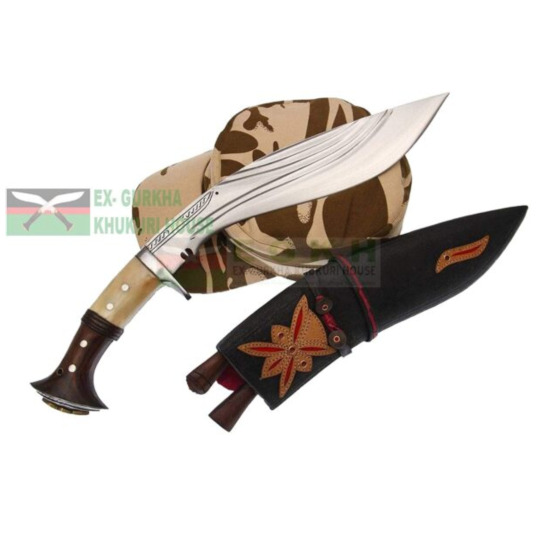
12″ Blade Hand-Forged Traditional Khukuri
12″ Blade Hand-Forged Traditional Khukuri | Handmade 5 Fuller Kukri | EGKH is a masterpiece of Nepalese craftsmanship. This khukuri boasts a 12-inch blade made from 5160 high carbon steel, a secure grip handle crafted from sturdy rosewood, a pinewood scabbard wrapped in water buffalo leather, and a weight of 750gm.
2 notes
·
View notes
Photo


Khukuri is a great Indian/Nepalese cuisine restaurant near Hiyoshi station. Every time we go there, the staff is always very friendly and it is just too hard to avoid ordering their juicy cheese-filled naan...
11 notes
·
View notes
Text
Welcome to Himalayan Blades, your destination for authentic, expertly crafted Khukuris and utility knives that embody the spirit and strength of Nepal. Our collection is deeply rooted in the heritage of the Khukuri – a blade renowned for its iconic curved design and historic ties to the legendary Gurkhas. At Himalayan Blades, we specialize in producing high-quality Khukuris, kitchen knives, and utility blades that combine traditional craftsmanship with modern precision. Each piece is hand-forged by skilled artisans who honor the legacy of these remarkable tools, creating blades that are not only functional but also hold a piece of cultural history. Whether you're a collector, an outdoor enthusiast, or simply appreciate fine craftsmanship, explore our range and discover the unmatched quality and heritage of Himalayan Blades.
#art history#19th century#blades#blade#kukri#khukuri#khukri#gurkha#gorkha#gurkharegiment#goorkhali#nepal#worldwar1#sword#bushcrafting
1 note
·
View note
Link
#kukri#khukuri#gurkha kukri#gurkhablade#GurkhaKhukuri#nepalese kukri#service no.1 kukri#Gurkha issue khukuri
0 notes
Photo


Nepalese kukri before and after restoration by Paul Macdonald of Macdonald Armouries in Edinburgh, Scotland.
103 notes
·
View notes
Photo


Making high quality handmade kukris/knives since 1991. We are here to share our part of the story and progress, with our special handcrafted designs and amazing line of products. We hope you will bear with us together. Follow us for the more on Khukuri, the khukuri makers, history and real challenges for this rare craftsmanship getting extinct.. A bow to the Nepalese Blacksmiths ‘Kami’, Khukuri, Gurkha & Nepal Jai Khukuri !! The Khukuri House (KHHI)
1 note
·
View note